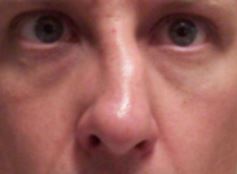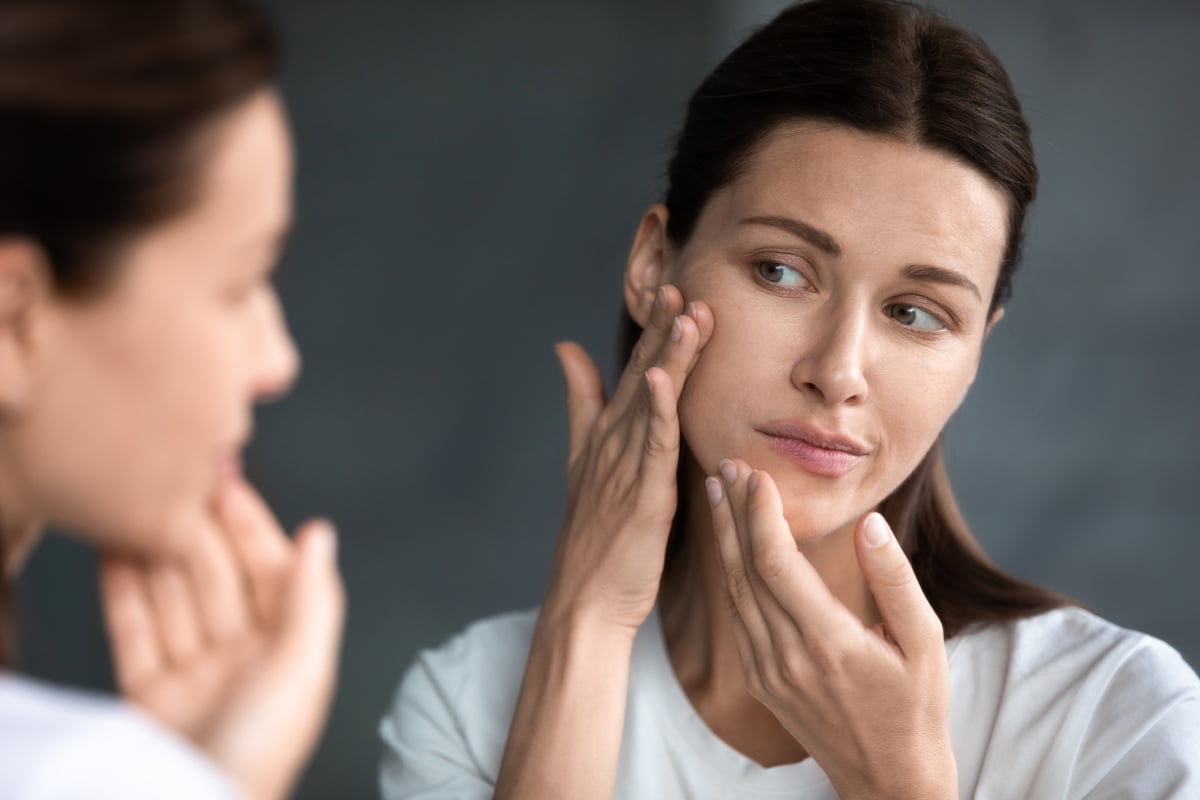Noses come in all shapes and sizes. Small, tall, wide, straight, smooth, bumpy you name it, there is a nose to suit. A straight nose is thought to be attractive worldwide. Having a straight, proportionate nose can have a positive impact on the rest of your facial features. However, not all of us are born with a nose that is straight and matches our facial features perfectly. A lot of people struggle with hooked or crooked noses. Luckily, a nose job like rhinoplasty can address these concerns.
Learn more about Rhinoplasty by ENT Surgeon Dr Stephen Kleid at Coco Ruby Clinic in Melbourne.
Download the Nose Job Surgery Guide
What is an Aquiline Nose?
The word Aquiline comes from the Latin word with the same spelling, which means curved beak of an eagle. Aquiline Nose, also known as a Roman nose, is a nose with a prominent bridge that comes with a curved appearance.
Some Common Causes of a Hooked/Crooked Nose
Top reasons for correcting noses with surgery;
- Genetics
- Injuries and trauma to the nose
- Infections
- Previous nose surgeries
- Tumors
Ways to Fix a Hooked Nose or Crooked Nose
The best way to correct your nose is through a plastic surgery procedure. A surgeon will be able to assess you and what you want and suggest the right procedure for you, depending on your unique needs. They may suggest one, or a combination of the following, either a non-surgical nose job, Rhinoplasty or septoplasty.
Non-Surgical Nose Job
This involves injecting fillers into different parts of your nose (primarily bridge and tip) in order to make your nose appear both straighter and smaller.
This procedure is not suitable for everyone and only works for people who need minor alteration. Some of the benefits of a non-surgical nose job include:
- No anaesthesia
- Quick recovery time
- No swelling and bruising
- Cheaper alternative to Rhinoplasty
Rhinoplasty Surgery
- There are two main types of Rhinoplasty; functional and cosmetic.
- Cosmetic Rhinoplasty only focuses on how your nose looks.
- Whilst, a functional Rhinoplasty corrects issues with breathing. Benefits of rhinoplasty include reshaping and straightening your nose and reshaping your nostrils.
Septoplasty Surgery
Septoplasty is done by reshaping the walls between nasal passages in order to achieve a straighter look. In addition to achieving the straight effect, it also gets rid of nasal airway blockage. This procedure is most commonly used to treat a hooked/crooked nose.
A Septoplasty can get help reduce:
- Snoring
- Headaches
- Facial pain
- Nasal discharge
Preparing for Aquiline Nose Surgery
Here is how you can prepare for Aquiline Nose Surgery:
- You surgeon may require certain tests to be complete before they can do the surgery. Ensure these are complete.
- Adjust your current medication as per your surgeon’s instructions.
- Avoid blood-thinning medications, anti-inflammatory medicines, and herbal supplements.
- Quit smoking and drinking a few weeks prior to the surgery.
- Arrange for someone to drive you home after the surgery.
- Take leave from work in advance.
- Quit caffeine a week before the surgery.
What is the process of getting Aquiline nose surgery?
Each surgery varies slightly depending on your unique case. However, below is a general look at what you can expect from Aquiline surgery.
Your Consultation
During the consultation, your surgeon will access your nose. They will ask questions to be sure they understand your goals and expectations from the surgery.
After a complete nose examination, the surgeon will guide you through the surgical procedure and tell you what can and cannot achieve, realistically.
Then, you will be guided through pre and post-surgical care as well as an estimate on the total cost. The surgeon will also show you what they expect your results to look like with the help of 3d Imaging. This helps you have a clear idea of what your nose will look like after the surgery.
Procedure
On the day of the procedure, the surgeon will guide you through the procedure in detail. Then, the Anaesthetist will administer anaesthesia. The surgeon will create incisions inside the nose, they will shave the cartilage if necessary and make alterations to reshape the bridge and the tip. Then the surgeon will close the incisions with sutures and apply bandages to secure everything in place.
Recovery Period
The chances are that you will wear a nasal splint for the first week after the surgery. You will also have some bruising and swelling on the nose and around your eye area as well. However, the majority of the swelling fades away within two weeks. After two weeks, you will have minor swelling (that will only be noticeable by you and your surgeon) that will last for around six months.
It is important to adhere to all the post-treatment instructions to have a smooth recovery. Here is how your recovery will look week by week after the surgery;
- 1 week post-surgery: Your stitches will be absorbed or removed depending on the type used.
- 3 weeks post-surgery: Your bruising, redness and swelling will fade away.
- 4 to 6 weeks post-surgery: Resuming most activities can occur, including strenuous exercises.
How to Care for Yourself After Surgery
Below are some tips to help you have a smooth and quick recovery.
- Sleep with your head in an alleviated position.
- Avoid;
- Eating hard to chew foods for the first two weeks after the surgery.
- Blowing through your nose or sniffing for the first two weeks after the surgery.
- Nose breathing for the first few weeks after the surgery.
- Do not open your mouth widely for the initial few weeks.
- Don’t lift heavy weights. Avoid strenuous exercising till your surgeon gives you a go.
- Stay away from contact sports for six weeks after the surgery.
- Avoid hot tubs and swimming for the first few weeks after the surgery. Swimming can increase the risk of infections.
- Take all your medications on time to deal with any pain and discomfort after the surgery. This also eliminates the risk of infections.
- Try not to bend over for the first week after the surgery.
- Do not put excessive pressure on your nose as it can affect its new construction.
Side Effects and Complications of the Aquiline Nose Surgery
Some common effects include;
- Some common side effects include;
- A blocked nose
- Stiffness/numbness in the nose area
- Soreness
- Bruising around the eyes
- And, light bleeding.
- Serious complication includes;
- Difficulty in breathing
- Infection
- Blood clot in a vein
- Infection and/or allergic reaction to anaesthesia.
What to Do When Things Go Wrong?
Any kind of cosmetic surgery comes with a certain degree of risk and complications. If you experience any severe pain or bleeding after the surgery, immediately contact your surgeon or the clinic.
Finding a Nose Surgeon
To ensure you are choosing the right surgeon for you, follow the tips below;
- Look at online reviews and see what patients are saying about a particular surgeon. You can find plenty of authentic review websites online.
- Visit the surgeon’s website and look at before and after photographs of other patients.
- Qualification matters – Go through the surgeon’s credentials and closely look at their specialisation.
- Experience matters more than you think. Someone with 10+ years of experience will deliver a better surgical experience than someone who has just begun.
- Comfort and confidence is the key – Always choose a surgeon you feel comfortable with.
Best Questions to Ask Your Nose Surgeon
Sometimes it’s easy to forget what questions you should ask your surgeon, so we have made a list to help you remember;
- Enquire as to what their general certifications, training and experiences are.
- Ask them about their experience specific to the surgery you are wanting to undergo, in this case Aquiline Nose Surgery.
- What is your revision policy?
- What steps will you ‘the patient’ need to take to get the best results?
- Where will you perform my aquiline nose surgeries?
- What surgical technique will suit me best?
- How long will be my recovery period and what should I expect?
- What are the risks and complications associated with Rhinoplasty?
- How do you plan to handle any complications that might arise?
- How can I expect my nose to look over time?
- What are my options if I am unhappy with my nose post-surgery?
- Can you show me post-op results via 3D Imaging?
Book a Consultation
Want to get rid of your crooked nose? Fill out the consultation form below, and we will get in touch with you shortly. Alternatively, you can give us a call or an email, and we will arrange a consultation for you.
FAQs about a Hooked Nose or Crooked Nose and Surgery options
How do you fix a hooked nose?
- The only way to fix a hook nose permanently is by opting for Nose Surgery.
Can a non-surgical nose job fix a crooked nose?
- It varies from person to person.
- In some cases, a non-surgical nose job can fix a crooked nose temporarily.
- However, if you wish to get a permanent cure for your crooked nose, opt for a surgical rhinoplasty.
How do you get Aquiline on your nose?
- The aquiline nose is due to genetics.
- It is more common among certain ethnic groups, including; Southern Europe, the Balkans, the Caucasus, South Asia, West Asia, North Africa, Central Asia, and the Horn of Africa.
What shape of the nose is most attractive?
- As they say, beauty is in the eyes of the beholder and surely very subjective.
- Generally, a Greek nose/traditionally straight nose is thought to be the most attractive nose shape.
Are crooked nose attractive?
- Traditionally, no. However, our asymmetry is what makes us unique. If you feel confident and have no medical problems, your crooked nose is attractive.
Why does my nose look crooked in pictures?
- A photograph is static and reverses a mirror image. It allows us to see ourselves from a different angle.
- Moreover, the camera can take the slightest curve, angle and make it look harsh than it does in real life.
Why does my nose look different on each side?
- The reason why your nose looks different on each side is due to the mild asymmetry of cartilages.
How can I shrink my nose?
- The only way to resize your nose is by opting for a nose job.
Can we reshape nose cartilage?
- Yes, during a nose job, your surgeon will reshape the cartilage if that is what necassary to give you the look you desire.
Can a nose be crooked without breaking it?
- Yes, naturally, crooked noses are very common.
Does non-surgical Rhinoplasty make your nose bigger?
- Yes, a non-surgical rhinoplasty will make your nose bigger.
- However, it doesn’t mean that it will look bigger.
- The fillers are done in such a way that they play with the proportions and your nose can end up looking smaller.
Can a nose job change your face?
- Yes, it will transform your face for the better. Unfortunately, even a slightly asymmetrical nose can impact the rest of your facial features in a negative way.
Is there an age limitation for nose surgery?
- The general advise is to get nose surgery when you are 18 or older. This is due to the fact that 18 is the approximate age your nose reaches full development. That being said, if you understand the surgery, its risks and complication and are in generally good health, there are no limits.
What is nasal tipplasty?
- It’s a nasal reshaping procedure that involves the reshaping of nasal tip without altering the nasal bone.
How long does the nose surgery take?
- The nose surgery generally takes about 2.5-3 hours to complete.
- However, the length of the procedure varies from case to case depending on the amount of work that is necassary.



